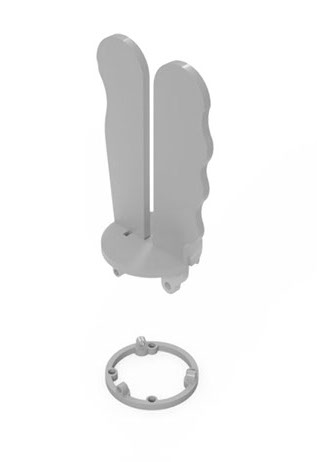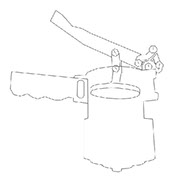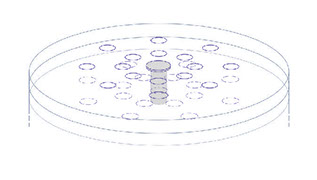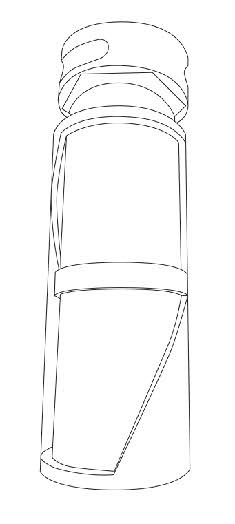GROWTH
WORK
Technology & Realization
Starting my first years I mostly valued the tangible qualities of a prototype and I used my steady hand and eye for craftsmanship. In my first two projects my main roles were that of the sketcher and realizer. I drew and laser cut an actuated mechanical iris and built a lighting system where pulling a ceiling lamp increased its brightness. My choices were motivated by what I sketched out during a brainstorm and the designed solutions were practical, but linear.
Modeling has become important to make the process to find a form for thoughts and sketches more iterative, and offered a way to think and explore interactions. In Cardboard Modeling I learned how manipulating material can become a way of thinking. Exploring existing products and motions through the Frogger Framework [1] during my B2.1, I experienced the relation between function, input, interaction and feedback. In the course Mechanical Engineering in Design I developed a way to explore and quickly evaluate interactions by using SolidWorks. In Design for the Here and Now I used cardboard interaction models to create a flow in multiple interactions and translated the mechanics to 3D models to evaluate and realize the final prototype. The result being Totem.
Walking through design processes in diverse design areas, I learned which kind of prototype is best to showcase a designs most relevant values. Prototypes do not necessarily have to be a fully working complex system, but need to convey a story and experience to involve users. For example, Mugen was communicated as product of craftsmanship and for the final prototype we put emphasis on the smoothness of the tangible interactions and the luxurious novelty by combining nice wood, leather, magnets and extra weights.
In my first FBP semester I experimented what was possible within a specific technology, but failed to find a user context. In the semester after I mapped the technology for a thorough understanding of the limits and possibilities, what allowed me to find an optimal context. As a bonus, I was able to live code changes on the instructions of a user as they tested the prototype. This was a fun method to directly realize user feedback.
I can safely say that T&R has become one of my core competencies, in close relation to C&A, and a part of my vision.
[1] SAG Wensveen, Johan Partomo Djajadiningrat, CJ Overbeeke, 2004, Interaction Frogger: A Design Framework to Couple Action and Function through Feedback and Feedforward.

Above the rendered 3D model of the hand grinder module created in SolidWorks for Totem. It features connections for springs, hinges and magnets. Below the press, filter and container modules.



